Notes on Forces – Couple And Inclined Plane

Forces on Masses in Gravitational Fields: A region of space in which a mass experiences an (attractive) force due to the presence of another mass.
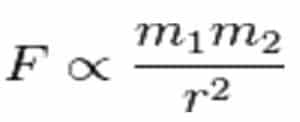
The Earth’s gravitational field is represented by parallel lines on small scales on objects like balls, cars and planes e.t.c

The parallel lines indicate a uniform gravitation field where gravitational field strenght is constant. The weight of an object is always directed towards the center of the earth.
Newton’s law of gravitation:
Any two point masses attract each other with a force that is proportional to each of their masses and inversely proportional to the square of the distance between them.
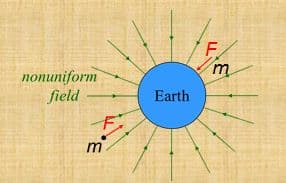
This diagram represent a non uniform field. The field strenght is inversely proportional to the squares pf the distance of separation.

Forces on Charge in Electric Fields:
A region of space where a charge experiences an (attractive or repulsive) force due to the presence of another charge.
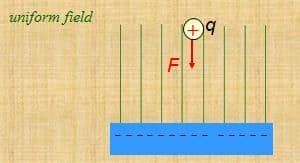
A uniform electric field is represented by parallel lines that are equally spaced in two parallel plates. The electric field strenght in a uniform electric field is constant.
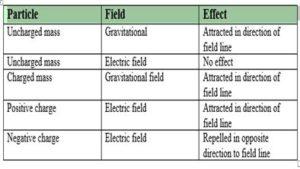
show an understanding of the origin of the upthrust acting on a body in a fluid
Upthrust: An upward force exerted by a fluid on a submerged or floating object; arises because of the difference in pressure between the upper and lower surfaces of the object.
Archimedes’ Principle:
Upthrust = weight of the fluid displaced by submerged object.
Upthrust = Vol(submerged) x ρ(fluid) x g
ρ represents density
Liquid has its own weight, this causes pressure on the wall on the container in which liquid is held, it also causes pressure on any object immersed in the liquid
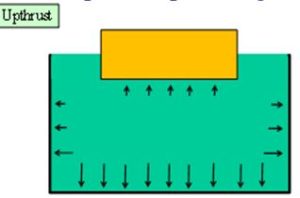
show a qualitative understanding of frictional forces and viscous forces including air resistance (no treatment of the coefficients of friction and viscosity is required)
When an object lies on a table or on the ground, the table or the ground must exert an upward force, otherwise it would be accelerated by gravity. This force is known as Normal force.

FRICTIONAL FORCES: Frictional forces are forces that act against the direction of motion

In this case,
resultant force = force applied – frictional force = 15 – 3 = 12 N
For inclined plane

Viscous forces
i. A force that opposes the motion of an object in a fluid
ii. Only exists when there is (relative) motion
iii. Magnitude of viscous force increases with the speed of the object
Air resistance
Although we often ignore it, air resistance, R, is usually significant in real life.
R depends on:
i. speed (approximately proportional to v 2 )
ii. cross-sectional area
iii. air density
iv. other factors like shape
R is not a constant; it increases as the speed increases and vice versa
When any object moves through air, the air offers a frictional resistance (drag) to the motion. This causes the object to decelerate. The deceleration is not constant but depends on the velocity of the object. The faster the object the greater the resistance and deceleration. You can experience this when an apple is dropped from the top of a building. At first v = 0, so R = 0 too, and a = –g. As the apple speeds up, R increases, and his acceleration diminishes. If he falls long enough his speed will be big enough to make R as big as mg. When this happens the net force is zero because the weight of the apple equals the air resistance, so the acceleration must be zero too. At this point you have what is called terminal velocity.

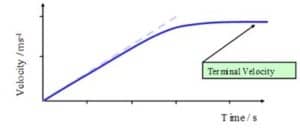
Understand that the weight of a body may be taken as acting as at a single point
Read: Moment of force
TYPES OF OBJECTS/BODY
i. Regular/uniform body
ii. Irregular/ non uniform bodies
The centre of gravity of a uniform or regular object is at its geometrical centre
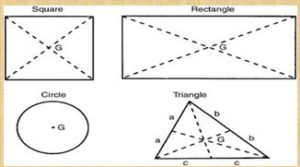
Centre of gravity for irregular object
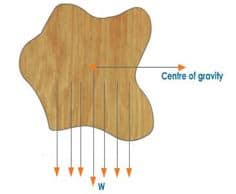
Turning effect of a force
The turning effect of a force is called the moment of the force. The moment is calculated by multiplying the force by the distance from the pivot.
The turning effect of a force depends on two things;
i The size of the force
ii The distance from the pivot (axis of rotation)
What is a couple?
A Couple is defined as two Forces having the same magnitude, parallel lines of action, and opposite.
Diagram of a couple
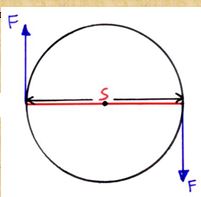
In this situation, the sum of the forces in each direction is zero. so a couple does not affect the sum of forces equations. A force couple will however tend to rotate the body it is acting on.
Two couples will have equal moments if
![]()
Torque
The turning effect of a couple is known as its torque
By multiplying the magnitude of one Force by the distance between the Forces in the Couple, the moment due to the couple can be calculated.
Torque:
moment of a couple= one force(N) × perpendicular distances between the forces(m)
The unit is Newton metre (Nm)
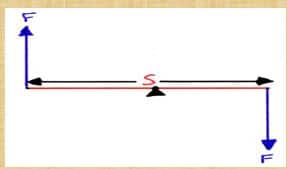
The principle of moments.
When an object is in equilibrium the sum of the anticlockwise moments about a turning point must be equal to the sum of the clockwise moments.
sum of anticlockwise moments = sum clockwise moments
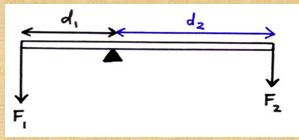
sum of anticlockwise moments = sum clockwise moments
![]()
Resolution of forces
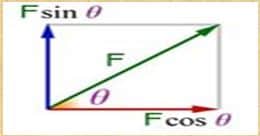
When 3 coplanar forces acting at a point are in equilibrium, they can be represented in magnitude and direction by the adjacent sides of a triangle taken in order.
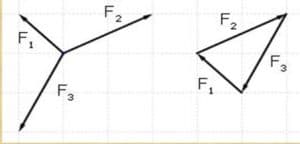
Example
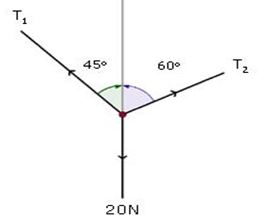
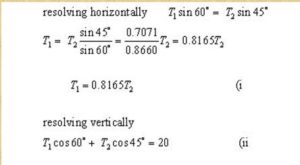
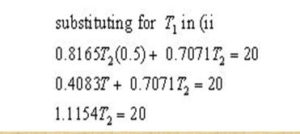
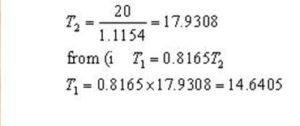
Recommended: Solved question on forces
